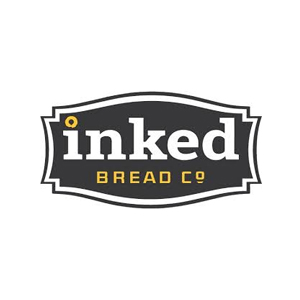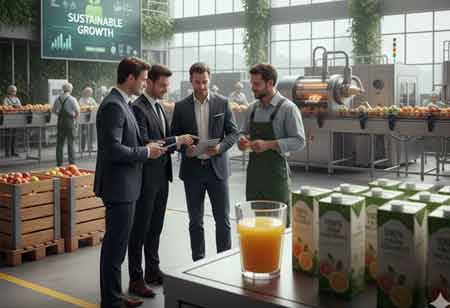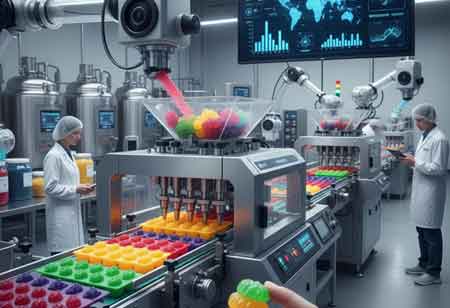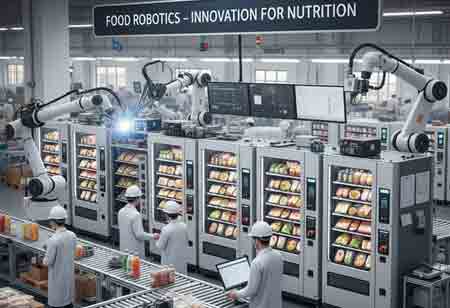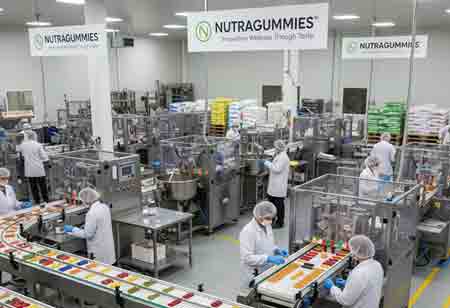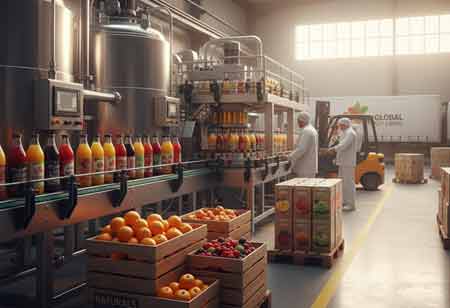\\\\ Top Organic /Plant Based Food companies \\\\
\\\\\\\\ Top Organic /Plant Based Food companies \\\\\\\\
-
Bianco Gelato
Bianco Gelato is reimagining gelato from a guilty pleasure into a health-conscious choice. While traditional gelato is already lower in fat than ice cream, Bianco goes further. It strips away preservatives, artificial stabilizers and mystery ingredients. What emerges is a clean-label gelato that preserves the flavor integrity of the original and is adapted for modern lifestyles.
-
Inked Bread Co.
Inked Bread Co. is an artisanal bakery renowned on the West Coast for its healthy organic and low-carb (keto-friendly) bread options. The company offers a great-tasting bread line-up that includes organic whole grains, organic whole wheat, organic white, organic sourdough, and low-carb (keto-friendly) varieties.
-
NURA
NURA is an innovative leader in vegan protein, offering sustainable, allergen-free, and high-quality ingredients like pea protein, YESTEIN® yeast protein, and COLLAWISE vegan collagen for diverse food and beverage applications, supporting health, performance, and environmental responsibility worldwide.
-
Pumpkin Tree Snacks
Pumpkin Tree Organics is a leading producer and seller of healthy snacks and beverages intended for the active lives of kids. The company is known for its staunch commitment to wholesome ingredients and offers products made from 100 percent organic fruits and vegetables.
-
Amara Organic Foods
Amara Organic Foods offers organic baby food and toddler snacks, including smoothie melts and purees. Their products are made with fresh, organic ingredients and use a dehydration process to preserve nutrients. Amara provides nutritious, convenient and healthy options for children, with no added sugars or preservatives.
-
Aurora Organic Dairy
Aurora Organic Dairy produces high-quality organic dairy products, focusing on sustainable practices. They manage the entire process, from organic feed production to milking and processing, ensuring no synthetic growth hormones or antibiotics are used. Their products, including milk, butter and cream, are made with integrity, offering traceable, fresh and affordable organic dairy to consumers nationwide.
-
Horizon Organic Dairy, LLC
Horizon Organic offers a range of organic dairy products, including milk, cheese, butter and cream, sourced from pasture-raised cows. They emphasize sustainability, animal welfare, and the use of no growth hormones, antibiotics, or GMOs. Horizon Organic is committed to providing high-quality, nutritious products while supporting organic farming practices and environmental responsibility.
-
Organic Valley
Organic Valley is a cooperative of organic farmers dedicated to producing high-quality, sustainable dairy products. Their offerings include milk, cheese, eggs and butter, all sourced from animals raised without antibiotics or synthetic hormones. The company emphasizes environmental stewardship, animal welfare and the promotion of organic farming practices, ensuring nutritious, ethically produced food for consumers.
-
SunOpta
SunOpta specializes in sourcing, processing and producing organic, non-GMO plant-based products. They offer a wide range of items, including beverages, snacks and ingredients, focusing on sustainability and innovation. SunOpta is committed to producing high-quality, responsibly sourced products while working to reduce their environmental footprint through efficient resource use.
More in News
The Strategic Intersection of Fruit Juice Manufacturing and Private Equity Funding in Europe
Thursday, November 06, 2025
Fremont, CA: The European fruit juice market, a significant segment of the continent's large food and drink industry, is undergoing a profound transformation. Driven by shifting consumer preferences toward healthier, natural, and sustainable products, the sector is experiencing growth, particularly in premium and functional juice categories. This shift, coupled with an inherent need for capital to drive innovation and consolidation, has created a compelling opportunity where Private Equity (PE) funding is playing a vital, strategic role in achieving sustainable growth. Market Dynamics The European juices market is shaped by shifting consumer preferences and regulatory pressures. While traditional, high-sugar juices are facing slowing demand amid health concerns and tighter regulations, categories such as 100 per cent juice, organic, not-from-concentrate (NFC), and functional beverages fortified with vitamins, probiotics, or antioxidants are experiencing strong growth. This evolution reflects an industry-wide shift towards health, transparency, and quality. However, sustainability has become both the defining challenge and opportunity for market players. Much of the fruit used in production is sourced globally, resulting in a complex environmental and social footprint, including carbon emissions, water consumption, and fair labour practices. At the same time, producers are under pressure to reformulate products by reducing sugar content while maintaining taste and clean-label appeal. Packaging innovation is another key focus, with companies striving to meet the EU’s Circular Economy objectives through recyclable, lighter cartons and reduced plastic usage. Operational efficiency—particularly in water conservation, energy management, and waste reduction—has become essential for ensuring competitiveness and long-term viability. The Sustainability Imperative PE investors are emerging as critical enablers of sustainable transformation within the European juice sector, leveraging capital and strategic expertise to accelerate environmental and operational progress. Beyond funding, PE firms are driving sustainability through interconnected strategies—innovation investment, consolidation, and premium brand development. By financing the green transition, PE capital supports the modernisation of manufacturing facilities for improved energy efficiency, the integration of water-reuse systems, and the adoption of nutrient-preserving technologies such as cold-pressing. These funds also support research and development of low-sugar, functional, and clean-label formulations aligned with consumer health trends. Through consolidation, PE firms merge smaller regional producers to create stronger, more efficient entities capable of achieving economies of scale and enhancing supply chain resilience. ESG integration is central to this process, ensuring sustainability goals—from carbon reduction to ethical sourcing—are embedded into business strategy. PE investors play a vital role in scaling premium, sustainable juice brands across Europe by supporting aggressive go-to-market strategies, digital transformation, and advanced analytics to enhance forecasting, reduce waste, and strengthen consumer engagement. The strategic intersection of fruit juice manufacturing and Private Equity funding in Europe is symbiotic. Juice manufacturers gain the financial muscle and strategic expertise needed to navigate complex sustainability challenges and meet evolving consumer demands. In turn, PE investors gain access to a resilient sector with clear pathways for value creation and profitable exits driven by the premiumization of sustainable, health-focused brands. For the European fruit juice industry to secure its competitive future, this capital injection and strategic overhaul, centred on sustainability, is not optional—it is essential for long-term, profitable growth. The focus must remain on the trifecta of Health, Heritage, and the Planet to satisfy consumers and generate superior returns.
The European Architecture of Food-as-a-Service
Thursday, November 06, 2025
The European food industry is moving decisively from a product-centric economy to a service-oriented ecosystem. This new paradigm, Food-as-a-Service, is not merely a new name for food delivery; it is a fundamental re-imagining of food production, distribution, and consumption, built on a foundation of digital technology, hyper-personalisation, and asset-light operations. This transformation is being driven by subscription services, cloud kitchens, and Direct-to-Consumer (DTC) brands. As these models converge, they are creating a complex, high-stakes operational landscape. This complexity has, in turn, fueled the rise of a new class of strategic advisor: the Food-as-a-Service consultant, a specialist focused on optimising the intricate machinery behind this new consumer-facing world. The Three Pillars of the Food-as-a-Service Ecosystem The subscription model transforms the “customer” into a “subscriber,” shifting the primary business metric from individual transactions to customer Lifetime Value (LTV). Beyond generating recurring revenue, this approach establishes a predictive income stream anchored in the European desire for curated, high-quality convenience and locally-sourced experiences. Its core innovation lies in anticipatory logistics—delivering not merely food, but the proper meal at the right time with minimal friction. Leveraging data analytics, feedback loops, and preference tracking, this model continuously refines offerings, reduces churn, and embeds itself into the consumer’s daily routine. The cloud kitchen model, also referred to as the asset-light factory, serves as the operational backbone of the Food-as-a-Service ecosystem. These production-first, delivery-only facilities decouple the kitchen from the European high-street storefront. By enabling multiple “virtual brands” to operate within a single location, cloud kitchens maximise resource efficiency and market responsiveness. They support rapid experimentation, data-informed menu optimisation, and scalable growth with minimal capital investment. The DTC Model empowers local and international food brands to bypass traditional, often rigid, European retail and distribution channels, fostering direct, unmediated relationships with their consumers. This model’s strength lies in its ownership of both customer data and the brand narrative. By managing every touchpoint—from digital acquisition to delivery—DTC brands cultivate strong communities, leverage behavioural insights for personalised marketing, and achieve a depth of brand loyalty unattainable through conventional retail environments. Individually, these models represent distinct innovations, but collectively, they form an integrated, synergistic ecosystem. A premium DTC brand focused on sustainable Nordic ingredients can utilise a cloud kitchen network in Central Europe for efficient production and a subscription model for customer retention. Conversely, a cloud kitchen operator can launch its own virtual brands operating on a DTC subscription basis, testing the waters across various European cities simultaneously. Optimising the New Food-Tech Stack The growing complexity of the Food-as-a-Service industry has created an urgent need for specialised expertise that extends beyond the capabilities of traditional restaurant consulting. Conventional advisory approaches—focused on dine-in experiences and local marketing—are no longer sufficient to address the unique operational and technological demands of this model. The modern consultant blends data-driven precision, brand-led strategic thinking, and operational expertise—grounded in cross-European labour and health standards—to design and optimise the business at the intersection of data, process, and technology. Before any operations commence, Food-as-a-Service consultants are engaged to architect the business model from the ground up. This process begins with deep hyperlocal market analysis to identify cuisine gaps and pricing opportunities—not within a physical neighbourhood, but across defined delivery radii. They assist in building digital-first virtual brand portfolios, conceptualising brand identities, developing menus, and engineering offerings specifically designed for performance on third-party delivery platforms. Every aspect —from naming and positioning to “menu engineering” — is optimised for discoverability, operational efficiency, and profitability, ensuring that each item travels well and maintains quality upon delivery. Operational efficiency is the cornerstone of profitability, and consultants play a vital role in structuring both the business's physical and digital workflows. For cloud kitchens, this involves detailed kitchen layout design that streamlines every stage of operation—from order intake to final dispatch—eliminating wasted motion and reducing processing time at each step. Consultants also establish comprehensive Standard Operating Procedures (SOPs) governing ingredient preparation, cooking, and packaging to ensure uniformity and quality across multiple virtual brands. Equally critical is optimising the supply chain through just-in-time inventory systems that efficiently support a multi-brand operation while minimising the significant food waste concerns central to many European regulatory initiatives. Through this integrated approach, Food-as-a-Service consultants enable brands to operate with precision, scalability, and sustained profitability in an increasingly data-driven marketplace. From Tech Stack to Unit Economics: The Duality of Food-as-a-Service Consulting A key consulting responsibility within this domain is the auditing and implementation of the technology stack—a task that extends far beyond deploying a basic Point-of-Sale (POS) system. It requires the seamless integration of a fragmented ecosystem of digital platforms, including order aggregators, kitchen display systems (KDS), inventory management tools, and customer relationship management (CRM) systems. These systems collectively streamline order flow, automate stock control, and leverage customer data from DTC and subscription channels to enable personalised engagement. By strategically selecting and integrating these technologies, consultants would allow operators to establish a unified data infrastructure—empowering them to make informed, real-time decisions across areas such as menu optimisation, pricing, and promotional strategy. The consulting mandate further extends to financial modelling. Consultants focus on optimising the key levers of profitability: food cost, labour optimisation (in a production-only environment), and delivery/packaging costs. They build models to analyse the complex commission structures of delivery platforms and identify pathways to profitability, often by steering businesses toward higher-margin DTC or subscription channels. This financial architecture is the blueprint for scale, defining how the model can be replicated from one cloud kitchen in Dublin to a pan-European network. The rise of Food-as-a-Service is not a trend; it is the new operational standard. The businesses that succeed will not just be those with the best recipes, but those with the most efficient, scalable, and data-responsive operating models. The Food-as-a-Service consultant has emerged as the essential architect for this new era, building the resilient, intelligent, and profitable food businesses of the European future.
The Gummy Supplement as Infrastructure: Building the Future of Functional Nutrition
Thursday, November 06, 2025
Fremont, CA: Rapid technological advancements drive the gummy supplement market. Once considered a novelty, gummies are now the preferred delivery format for vitamins and nutraceuticals, appealing to a broad consumer base thanks to their taste and convenience. To meet surging demand while ensuring product quality, efficiency, and consumer trust, manufacturers are leveraging cutting-edge innovations in automation, ingredient transparency, and custom formulation. Automated Production: The Engine of Efficiency Automation is transforming gummy manufacturing, shifting production from traditional, labor-intensive methods to high-speed, precision-driven operations. Modern systems, such as advanced candy depositors and starchless molding technologies using silicone or metal molds, have replaced outdated starch mogul processes. These innovations deliver superior hygiene, consistent product dimensions, and precise dosage control, while significantly reducing contamination risks. Technologies like the SiMoGel method exemplify this leap in efficiency, cutting gelatin gummy setting times from nearly 24 hours to under 15 minutes—vastly improving throughput and production flexibility. In tandem, real-time quality control systems equipped with sensors and AI-powered vision technology continuously monitor the production line. These intelligent systems can instantly identify and reject any gummies that deviate from shape, color, or ingredient uniformity, ensuring impeccable consistency and compliance with safety standards. Automated dosing and blending solutions ensure precise incorporation of active ingredients—vitamins, minerals, and botanicals—critical to maintaining potency and stability, especially when handling heat-sensitive formulations. Custom Formulation: Tailoring Nutrition with Technology The growing demand for personalized and functional supplements is driving rapid innovation in gummy formulation science. Manufacturers are leveraging advanced technologies to overcome traditional limitations such as moisture sensitivity, low active ingredient capacity, and stability challenges. The adoption of pectin-based (vegan) and next-generation gelling agents has improved heat resistance and product stability, enabling the production of gummies fortified with probiotics, adaptogens, and marine peptides. To enhance efficacy and user experience, novel delivery systems, such as microencapsulation, protect delicate or bitter-tasting ingredients, ensuring they remain stable during processing and release effectively upon consumption. Similarly, center-filled gummies enable heat-sensitive actives to be housed in liquid cores, preventing degradation and enabling more complex, dual-phase formulations. 3D printing stands at the forefront of customization—promising precisely engineered gummies with individualized shapes, flavors, and nutrient profiles, informed by AI-driven health diagnostics. Technological innovation in gummy manufacturing is not just about making more gummies faster; it’s about making better, safer, and more trustworthy nutraceuticals. By embracing automation for efficiency, developing new formulation methods for efficacy, and leveraging digital tools for transparency, the industry is poised to continue its rapid growth, solidifying the gummy supplement as a pillar of modern consumer health and wellness.
Factory-Grade Precision Meets Food Service: Redefining Vending Through Robotics
Thursday, November 06, 2025
The familiar vending machine, once a simple electromechanical dispenser of pre-packaged snacks, has evolved into the frontline of a sophisticated new industry: robotic food automation. This revolution is anchored in the convergence of advanced mechanical engineering, precision thermal management, and highly versatile dispensing technologies. Moving far beyond the simple "drop and grab," these systems are now complex mechatronic organisms designed for culinary precision. Precision in Motion The primary departure from legacy systems lies in the complete redesign of the internal mechanics. Multi-axis robotic systems have replaced the static spiral coil, fundamentally changing the machine's capabilities from mere dispensing to active handling and assembly. At the center of this new architecture is a 3-axis or 5-axis robotic arm, or a gantry system operating on linear rails. This shift is critical. A gantry system, composed of a Cartesian robot, provides exceptional precision and rigidity, allowing a specialized tool to move with sub-millimeter accuracy in X, Y, and Z dimensions. This is essential for navigating a densely packed storage area and delivering an item to a precise "kitchen" or "pickup" location. More advanced "articulated" or "SCARA" (Selective Compliance Articulated Robot Arm) arms offer greater flexibility, mimicking the dexterity of a human arm to reach around obstacles or access storage carousels from multiple angles. The design of these robotic systems prioritizes reliability and speed. They are built with high-cycle-count components—such as brushless motors, precision-ground ball screws, and robust bearings—to ensure they can perform tens of thousands of operations without failure. Equally important is the "end-of-arm tooling" (EOAT), or the "gripper." This is no longer a one-size-fits-all mechanism. Modern systems use custom-designed EOATs tailored to the food products they handle. A vacuum gripper with soft, food-grade silicone cups might be used to lift a delicate pastry box or a salad bowl gently. A two-fingered parallel gripper could be used to grasp a bottled beverage securely. For bulk ingredients, spatulas or scoop-like tools may be integrated. This ability to gently lift, transfer, and place items—rather than dropping them—unlocks the potential to vend delicate, high-value, and multi-component meals. Mastering Temperature Control One of the most remarkable engineering achievements in modern food vending is the development of multi-zone thermal management within a single, compact system. To deliver fresh, ready-to-eat meals, these machines must simultaneously function as a freezer, refrigerator, and oven. This is made possible through advanced insulation, precise compartmentalization, and a network of intelligent sensors. The interior is divided into distinct thermal zones, each with its own dedicated refrigeration or heating system. The frozen zone, operating at approximately –18°C (0°F), employs a high-capacity vapor-compression refrigeration cycle comparable to that of commercial freezers. It preserves ingredients such as ice cream, frozen pizza bases, and smoothie components in a deep freezer. The refrigerated zone, maintained between 2°C and 5°C (35°F and 41°F), serves as the primary area for storing fresh food—ideal for salads, sandwiches, yogurts, and other meal components. It uses a gentler refrigeration loop with forced-air circulation to maintain consistent temperatures and eliminate hot spots that could lead to spoilage. An ambient zone is designated for items that do not require temperature control, such as cutlery, napkins, condiments, and bottled beverages. The true innovation, however, lies in the finishing stage. When a hot meal is ordered, a robotic arm transfers the selected item from cold storage to a specialized cooking station. Far from a conventional microwave, this station employs cutting-edge heating technologies that deliver restaurant-quality results in under 3 minutes. High-speed impingement ovens, for example, use jets of high-velocity, precisely heated air to cook food while rapidly enhancing texture and browning. Other systems integrate infrared, convection, or automated steam injection for precise reconstitution. This entire thermal ecosystem is orchestrated by a sophisticated network of thermocouples and sensors that provide continuous feedback to a central controller. The result is a tightly regulated environment in which every meal—whether frozen, chilled, or freshly heated—is maintained and served at its ideal, food-safe temperature. Dispensing Diversity This engineering revolution lies in the capability to handle and dispense an exceptional range of product formats — from solid ingredients and delicate dishes to liquids, powders, and viscous sauces. This capability, known as multi-format dispensing, represents the core of next-generation automated food preparation systems. In this process, the robotic arm manages primary containers — such as bowls, cups, or boxes —while a specialized suite of dispensing technologies handles the actual ingredients. For instance, a machine preparing a custom salad, grain bowl, or barista-style coffee must coordinate multiple dispensers in precise sequence to ensure both accuracy and consistency. For solids and granules—such as nuts, croutons, or shredded cheese—engineers employ vibratory feeders or auger-based dispensers. The auger, also known as Archimedes’ screw, uses a rotating helical shaft to deliver a consistent, measurable volume of material. By regulating the number of rotations, the system achieves exact portion control down to the gram. For low-viscosity liquids like coffee, milk, or simple syrups, systems often rely on solenoid valves and precision pumps. Among these, peristaltic pumps are preferred for their hygienic design: since the liquid flows only through a sealed, food-safe tube, contamination risk is minimized and cleaning is simplified. Dispensing high-viscosity liquids—such as sauces, dressings, or purées—poses more complex fluid dynamics challenges. These applications require positive-displacement pumps capable of generating sufficient pressure to move thick fluids through nozzles without clogging, all while maintaining tight control over portion sizes. The culmination of this process is an automated, miniature assembly line. The robotic arm places a bowl, which is then transferred to an auger for a rice base, then to a liquid dispenser for sauces, followed by a sequence of solid-ingredient dispensers for toppings, before finally being sealed and presented to the customer. This seamless, high-speed choreography of mechanical arms, thermal control zones, and volumetric pumps defines the cutting edge of automated, multi-format food dispensing. The robotic vending machine revolution weaves together the precision of factory automation with the complex, non-uniform demands of the culinary arts. Through sophisticated mechanical design, multi-zone thermal management, and versatile dispensing technologies, engineers are building a new infrastructure for food service—one that is autonomous, precise, and endlessly adaptable. This technology is fundamentally reshaping our expectations of convenience, moving from a simple snack to a fully prepared, custom-engineered meal.
Smart Formulation: Balancing Taste, Texture, and Efficacy in Gummy Supplements
Thursday, November 06, 2025
More consumer-friendly delivery formats have replaced the nutritional supplement. At the forefront of this evolution is the gummy supplement—a format that has successfully merged the principles of nutritional science with the sensory appeal of confectionery. This shift, however, represents far more than a simple change in shape or form. The modern supplement gummy is a sophisticated delivery vehicle, the product of intensive research and development. Creating a product that is not only enjoyable to eat but also delivers a stable, effective, and bioavailable dose of an active ingredient is a complex scientific pursuit. The industry's focus has converged on a central objective: mastering the intricate balance between palatability, sensory experience, and functional efficacy. Active Ingredient Stability Before a gummy can be judged for its flavor or texture, it must first be a viable supplement that effectively delivers its active ingredients. Active ingredient stability is the bedrock of gummy formulation. The "payload," whether it be vitamins, minerals, botanical extracts, or probiotics, must remain potent and intact from the moment of manufacture to the time of consumption. Many vitamins, for instance, are sensitive to heat, light, or pH changes. Minerals can interact with other ingredients, leading to precipitation or unwanted chemical reactions. To protect these actives, formulation science employs a range of advanced techniques. Microencapsulation is a leading strategy in which the active ingredient is coated with a microscopic barrier. This shield serves multiple purposes: it protects the nutrient from degradation caused by exposure to oxygen, moisture, or other ingredients in the gummy matrix. R&D teams control the gummy's internal environment. By precisely managing water activity (aw)—the amount of "free" water available for microbial or chemical reactions—formulators can create an inherently stable matrix. This, combined with careful pH optimization, establishes a foundation that protects the active ingredients, ensuring the product remains effective throughout its shelf life. The ultimate goal of efficacy extends to bioavailability, ensuring that the nutrients are not only stable in the gummy but are also readily absorbed by the body upon ingestion. Mastering Flavor and Palatability An effective gummy supplement succeeds only when consumers are willing to take it consistently, making sensory science a critical element of formulation. The key driver behind the gummy format’s widespread popularity lies in its palatability—yet achieving a pleasant taste remains one of the most significant challenges for formulators, given the inherently unpleasant flavor profiles of many active ingredients. Vitamins tend to be sour, minerals tend to be metallic, and botanicals tend to be intensely bitter. Simply adding sugar or fruit flavors rarely suffices to mask these off-notes, which is why the science of flavor masking has become a central focus in research and development. Modern formulation approaches move beyond merely “covering up” undesirable flavors to engineer a balanced, engaging flavor profile. This involves a multi-faceted strategy. Specialized blockers and modifiers interact with taste receptors, selectively dampening bitterness or metallic notes without distorting the overall taste experience. Strategic flavor pairing leverages sensory compensation—such as combining slightly bitter actives with citrus or coffee flavors, where a hint of bitterness is naturally expected and accepted by consumers. Acidulants like citric, malic, and tartaric acids further enhance this balance by brightening fruit flavors, lending authenticity and vibrancy that help divert attention from underlying off-notes. Equally important is the choice of sweetener—whether traditional sugars, sugar alcohols, or high-intensity alternatives—is made not only for sweetness intensity but also for its harmony with the flavor system and its influence on texture. In addition, microencapsulation techniques, often used to enhance ingredient stability, also play a dual role in flavor optimization. By physically enclosing active ingredients, the coating prevents premature interaction with taste receptors, ensuring the actives are released later during digestion. Engineering the Perfect Texture Flavor represents only one dimension of the sensory experience; the other is texture, or mouthfeel. Consumers hold well-defined expectations for what constitutes the ideal “gummy” — a pleasant elasticity, a clean bite, and a satisfying chew that neither adheres to the teeth nor dissolves prematurely. The hydrocolloid system determines this distinctive texture, or gelling agent, which forms the gummy’s structural foundation. The selection of an appropriate gelling agent is therefore a pivotal decision in the formulation process. Gelatin remains the traditional benchmark, valued for its characteristic “melt-in-the-mouth” sensation and its slow, elastic chew. However, pectin has gained significant popularity, particularly in vegan and vegetarian formulations. Pectin imparts a distinct texture—offering a shorter, cleaner bite—and its gelling behavior is closely tied to the balance of sugar and pH, directly influencing both flavor and product stability. Other plant-based alternatives, such as agar-agar, carrageenan, and modified starches, are also utilized to achieve specific textural objectives. The nature of the active ingredients further complicates the choice of gelling system. Minerals can interfere with the gelling process and weaken the structure, while oily actives, such as fish oil, can destabilize emulsions, leading to grainy or slick textures. As such, R&D teams must identify a hydrocolloid system robust enough to support the active load while preserving the desired sensory profile. A decision made to improve one pillar will invariably affect the other two. Changing the pH to optimize flavor (taste) might negatively affect pectin gelling (texture) and accelerate the degradation of a sensitive vitamin (efficacy). Adding a new bitterness blocker (taste) might alter the water activity (efficacy). Using a different gelling agent (texture) will change the flavor release and mouthfeel (taste). This is why the modern R&D process is not sequential; it is holistic. Formulators must map a complex matrix of interactions, using their deep knowledge of ingredient chemistry to find the "sweet spot" where all three attributes align. Even the manufacturing process—such as cooking temperature and drying time—is a critical variable that must be optimized to protect actives, set texture, and preserve flavor. The simple, enjoyable gummy supplement is, in truth, one of the most complex products in the functional food space. Its continued rise is a testament to the remarkable advancements in formulation science, where R&D teams successfully orchestrate a delicate balance of chemistry and sensory appeal to create a product that is at once delicious, satisfying, and effective.
The Rise of Premium Juice as Europe's Symbol of Wellness
Thursday, November 06, 2025
The European beverage aisle has quietly transformed, turning juice from a simple breakfast-table staple into a radically reinvented, trend-driven product. The familiar carton, often associated with high sugar content and simple flavours, is being eclipsed by a new generation of products that look, feel, and function more like sophisticated elixirs than simple refreshments. This is the new era of premium juice: a category moving decisively from a simple commodity to a complex, aspirational lifestyle product. This transformation is not accidental; it is a crafted shift driven by sophisticated branding, the integration of high-value functional ingredients, and a deep, intuitive wellness positioning that resonates with the modern European consumer. The impetus for this evolution stems from a significant shift in consumer consciousness. The contemporary European shopper is educated, discerning, and increasingly holistic in their approach to health. Simple "natural" claims are no longer sufficient. This consumer demands transparency, efficacy, and products that align with their personal values and wellness goals. They are willing to invest more, but in return, they expect a product that delivers tangible benefits and a sense of elevated experience. This created the perfect environment for juice to shed its simplistic image and be reborn as a vehicle for health, an emblem of self-care, and a marker of a discerning palate. Branding: Crafting the Aspirational Sip The first and most visible dimension of this premiumization is branding. The new aesthetic of premium juice is a deliberate departure from the bright, primary colours and playful imagery of the past. The visual language now speaks of purity, sophistication, and science. Packaging has become a primary signifier of quality. Heavy, clear glass bottles have become commonplace, replacing plastic and cartons. This shift is twofold: glass communicates a premium, non-reactive purity and also aligns with powerful European sentiments around sustainability and plastic reduction. The shape is often minimalist, resembling an apothecary bottle or a high-end cosmetic product, immediately signalling that its contents are precious and potent. Labelling has transformed from sales-focused graphics to a study in minimalist elegance. Fonts are often clean, serene, and serifed. The colour palettes are muted, earthy, or starkly monochromatic, allowing the vibrant, natural colour of the juice itself—a deep green from leafy vegetables, a vibrant purple from berries, or a fiery orange from turmeric—to be the hero. This visual restraint paradoxically creates a more powerful, confident brand presence. The language used to describe these products has also been elevated. This is no longer just "orange juice." It is a "morning ritual blend," a "botanical elixir," a "probiotic tonic," or a "cold-pressed infusion." This vocabulary reframes the product's function, moving it from a passive refreshment to an active, purposeful tool for well-being. The product's story is central. Phrases like "single-origin," "artisan-crafted," and "small-batch" are used to build a narrative of quality and care. Even the production method itself, such as "cold-pressed," has become a vital piece of branding, communicating a superior, nutrient-dense process that justifies a higher price point. Functional Ingredients: The Juice with a Job If branding creates the desire, functional ingredients justify. The premium juice is no longer defined simply by what it is (e.g., apple juice) but by what it does. The liquid is now a sophisticated delivery system for a host of sought-after, high-value ingredients that promise tangible benefits. Vitamin C, the new standard, involves a complex matrix of ingredients drawn from global wellness traditions and cutting-edge nutritional science. Blends for gut health are prominent, incorporating prebiotics, soluble fibres, and live probiotic cultures. Fermented bases, such as water kefir or kombucha, are sometimes used to create a naturally sparkling, gut-friendly beverage. Another significant category targets mental well-being, energy, and stress response. This is the domain of adaptogens. Ingredients such as ashwagandha, rhodiola, and medicinal mushrooms are incorporated into blends designed to help the body manage stress and enhance focus. For a natural lift, ingredients like matcha, guarana, and cold-brew coffee extracts are used, while ginger and turmeric are staples for their anti-inflammatory and digestive properties. Immunity is addressed with potent boosters beyond traditional sources. High-antioxidant berries, echinacea, and zinc are formulated into "defence" or "shield" blends. This "juice-plus" model fundamentally changes the value proposition. The consumer is no longer just buying a drink; they are buying focus, calm, immunity, or a beauty treatment in a convenient, palatable format. Wellness Positioning: The Ritual of Self-Care The elements of branding and function are woven together into a cohesive wellness positioning. The new premium juice is marketed not just as a product, but as an integral component of a modern, health-conscious lifestyle. This is not a drink to be consumed quickly. The premium price and sophisticated flavour profiles encourage mindful consumption. It’s positioned as a "mid-afternoon reset" instead of a sugary snack, a "post-workout recovery" to replenish the body, or a "morning kick-start" to replace a harsh caffeine jolt. The category has also adeptly filled a space created by the "mindful drinking" and "sober-curious" movements sweeping across Europe. As more consumers seek to reduce their alcohol intake, they are searching for sophisticated, non-alcoholic alternatives that feel special and adult. A beautifully packaged, complex, cold-pressed botanical blend serves as a perfect, health-positive substitute for a glass of wine or a cocktail, providing a similar sense of ritual and treat without the adverse effects. This positioning aligns perfectly with core European values of quality, transparency, and holistic health. The emphasis on organic sourcing, "free-from" claims (no added sugar, no preservatives, no concentrates), and clear, simple ingredient lists builds trust. The product is presented as a guilt-free indulgence, an investment in one's own vitality. The transformation of juice from a basic commodity to a premium lifestyle product is a masterclass in modern marketing and product innovation. The premium juice of today is far more than a beverage; it is a functional, delicious, and beautifully packaged emblem of contemporary self-care.





